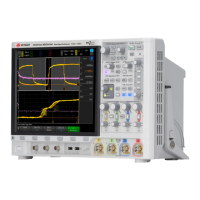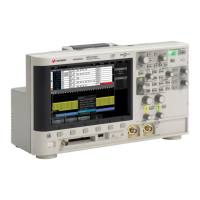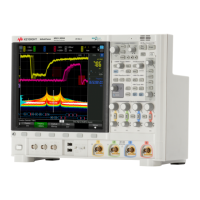38 1000 X-Series Oscilloscopes Service Guide
2 Testing Performance
2 Set up the oscilloscope.
a Press the [Default Setup] key.
b Press the [Mode/Coupling] key; then, press the Mode softkey to select Normal.
3 Change the signal generator output frequency to 10 MHz or the maximum
bandwidth of the oscilloscope.
4 Set the power meter Cal Factor % to the appropriate value (10 MHz or max BW
of oscilloscope) on the calibration chart on the power sensor. If necessary, do a
linear interpolation if a 10 MHz or Max BW factor is not included in the power
meter’s calibration chart.
5 Adjust the signal generator output for reading on the power meter of:
6 Press the [Trigger] key, then press the Source softkey to set the trigger source to
External.
7 Check for stable triggering and adjust the trigger level if necessary. Triggering
is indicated by the Trig’d indicator at the top of the display. When it is flashing,
the oscilloscope is not triggered. When it is not flashing, the oscilloscope is
triggered.
8 Record the results as Pass or Fail in the Performance Test Record (see
page 39).
If the test fails, see the “Troubleshooting” chapter. Then return here.
Signal Generator
Frequency
Calculation Power Meter
Reading
10 MHz (8 V range) 250 mV
pp
= 88.39.71 mV rms, Power = Vin
2
/50Ω =
88.39 mV
2
/50Ω
156.25 μW
10 MHz (1.6 V range) 50 mV
pp
= 17.68 mV rms, Power = Vin
2
/50Ω =
17.68 mV
2
/50Ω
6.25 μW
Max BW of oscilloscope
(8 V range)
500 mV
pp
= 176.78 mV rms, Power = Vin
2
/50Ω =
176.78 mV
2
/50Ω
625 μW
Max BW of oscilloscope
(1.6 V range)
100 mV
pp
= 35.36 mV rms, Power = Vin
2
/50Ω =
35.36 mV
2
/50Ω
25 μW

